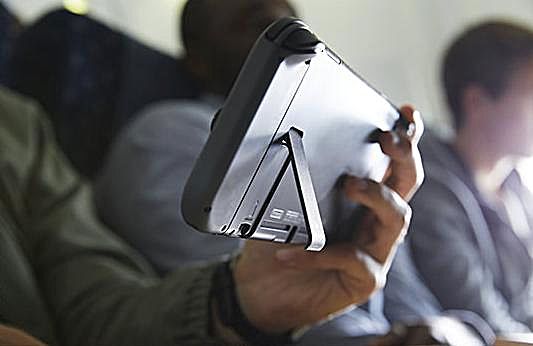So come into this thread I read the OP, see the 3 hours charge time, think "that's pretty reasonable", and see that they're using a 4310 mAh battery, which is on the top end of what I would have expected. Good stuff.
And then I start reading the replies... holy hell. I know neogaf has a reputation for over-reacting to things, but this thread is just straight up nuts. Go outside, take a walk, have a breath of fresh air, and when you've calmed down you can come back and we can actually look at the facts.
You're back? Great, nice day outside, isn't it? Okay, now let's talk batteries.
Battery Size
At 4310 mAh, Switch has by far the highest-capacity battery of any gaming device ever made. Here's what's currently out there:
3DS / 2DS - 1300 mAh
New 3DS - 1400 mAh
(New) 3DS XL - 1750 mAh
PS Vita - 2200 mAh
That's about twice the capacity of PS Vita or almost three and a half times the capacity of the 3DS or 2DS.
Now, you're surely saying "but X phone or Y tablet has such-and-such a capacity, Nintendo must be able to fit more in there!", but I'm willing to be X phone and Y tablet aren't actively cooled. A typical phone or tablet these days is basically a battery with some electronics and a screen attached. For a phone the battery could account for 60-70% of the internal volume, and it can be even higher for tablets.
Nintendo doesn't have the luxury of dedicating so much internal space to batteries, because it has to fit a fan and heatsink in there, which likely occupies as much as half the space between the screen and the rear of the case. Have a look at this rear-view photo of the Switch:
The blue box I've included is pretty much the best-case-scenario for how much space Nintendo can allocate to the battery in Switch. If you look at the fan vents at the top and bottom of the unit you can see where the heatsink and fan are going to sit (and I've been pretty conservative with the red box for this, as I'm not even including the area around the third vent to the lower right). Then on the left we've got space taken up by the game card slot, microSD slot, kickstand, and likely part of the logic board (which will overlap the cooling system).
There's no space for a bigger battery. The reason I say 4310 mAh is at the top end of what I would have expected is because there's just nowhere to put anything bigger. A 4310 mAh battery is basically Nintendo squeezing as big a battery as they possibly can in there. Quote me on this, when we see teardowns in March there isn't going to be some big gap where they could have put a bigger battery. They've squeezed in as much as they can without increasing the physical size of the device.
Charging
Regarding the "Switch doesn't do quick charging" claim, let's first do some basic maths. A 4310 mAh battery, assuming a standard 3.7V, comes to 15.95 Wh. For that battery to charge from 0 to 100% in 3 hours, then at an absolute minimum, it would have to be charging at a rate of 15.95/3 = 5.3W. Standard USB 2 provides 2.5W of power, so it's physically impossible for Switch to charge so quickly without some form of "quick charging".
However, as several people have already pointed out, batteries don't charge at a flat rate from 0 to 100%, they charge more quickly for the first ~80%, and much more slowly for the final ~20%. It's quite likely that Switch's peak charging rate is anywhere from 10-15W, which is, once again, far more than a standard USB 2 charger would provide.
Finally, we have Nintendo's FCC listing for Switch last month, which gave us these little nuggets of information:
See that bit where it says that the (USB-C) AC adaptor can output DC at 15V? That, folks, means that the system uses USB Power Delivery Revision 2.0 Version 1.2 or later. Or, in layman's terms, quick charging.
So, unless Nintendo have broken both the laws of thermodynamics and some regular human laws by lying to the FCC (although I'd imagine they'd get into more trouble over the former), Switch is most definitely capable of quick charging by any definition.
Regarding the total charging time of 3 hours, this is pretty typical for a gaming device. The 3DS takes even longer at 3 and a half hours for a full charge, while the PS Vita takes 2 hours and 40 mins. And in both cases we're talking about far smaller batteries than Switch has.
People also need to keep in mind once again that li-ion batteries are much slower to charge for the last 20% or so. This is why phone manufacturers always give specs like "charges to 80% in an hour", and leave out the fact that the remaining 20% takes another hour. Anantech provides some useful charging graphs in their smartphone reviews (e.g. OnePlus 3T, Honor 8), and if you look through them you'll notice a trend that charging to 80% typically takes only half the time of charging fully to 100%. This is going to vary a little bit depending on the battery and charging tech used, but it's usually around that ratio.
Translating to Switch, what we're probably looking at is the device charging to 80% battery in 90 minutes or so. Which, for me at least, is pretty reasonable. Yeah, they probably could have got it down to 60 minutes by using a more expensive battery, more expensive power ICs and a more expensive charger, but I doubt I'll ever be in a situation where that's the difference between my Switch having a usable amount of charge or not.
TLR
- Switch's battery is far bigger than any other gaming device
- Switch's battery is as big as they could possibly fit in there given the active cooling
- Switch definitely uses quick charging (source: FCC & James Clerk Maxwell)
- Switch probably charges to ~80% battery in about 90 minutes
You may want to consider turning this into its own thread. (after the modbot cleanse has stopped)



